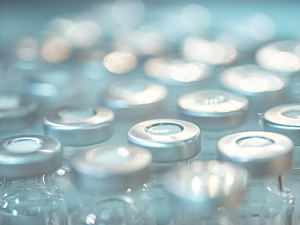Ketamine, administered intravenously at a subanesthetic dose, is being used increasingly often for patients with treatment-resistant major depressive disorder. It can lead to transient changes in thinking and perception. Still, for patients without psychotic features, it’s an attractive alternative to electroconvulsive therapy (ECT) because of greater availability, less stigma, and less concern about cognitive impairment.
Amit Anand, MD, director of Mood Disorders Neuroimaging at Massachusetts General Hospital and director of Psychiatry Translational Clinical Trials at Brigham and Women’s Hospital, and colleagues conducted ELEKT-D, a pragmatic comparative-effectiveness trial of ketamine and ECT for nonpsychotic treatment-resistant major depression.
They report in The New England Journal of Medicine that ketamine was non-inferior to ECT on the primary outcome: treatment response according to the Quick Inventory of Depressive Symptomatology–Self-Report (QIDS-SR-16).
Methods
ELEKT-D was a prospective, open-label, randomized noninferiority trial conducted at five U.S. sites. Eligible patients were 21 to 75 years old, reported having had unsatisfactory responses to at least two adequate trials of antidepressant treatment in their lifetime, and had a score >20 on the clinician-administered Montgomery–Åsberg Depression Rating Scale (MADRS).
403 patients were randomly assigned 1:1 to ketamine or ECT between March 2017 and September 2022, and 365 received at least one treatment (ketamine, n=195; ECT, n=170). Notably, more patients withdrew from the ECT group than the ketamine group before starting treatment.
The trial proceeded in two phases:
- All participants entered a three-week initial treatment phase with either ketamine (twice per week) or ECT (three times per week)
- Patients who responded (≥50% decrease in QIDS-SR-16 score) were followed for six months, during which time they could receive either ketamine or ECT as prescribed by their physician
Primary Outcome
The primary outcome was a response according to the QIDS-SR-16 (≥50% decrease in score) at the end-of-treatment visit (the end of the initial three-week period). Response occurred in 55.4% of patients in the ketamine group and 41.2% in the ECT group (difference, 14.2 percentage points; 95% CI, 3.9–24.2; Farrington–Manning score statistic for noninferiority, 4.64; P<0.001).
Secondary Outcomes
Selected secondary efficacy outcomes were:
- Response according to the MADRS (≥50% decrease in score from baseline to the end-of-treatment visit): 51% of the ketamine group vs. 41% of the ECT group
- Remission according to the QIDS-SR-16 at the end-of-treatment visit (score £5): 32% vs. 20%
- Remission according to the MADRS (score £10): 38% vs. 22%
On the following measures, higher scores are better. At the end-of-treatment visit:
- Mean score on the Global Self-Evaluation of Memory (GSE-My, range, 1–7): 4.2 of the ketamine group vs. 3.2 of the ECT group
- Mean score on the Squire Memory Complaint Questionnaire (SMCQ, range, −72 to 72): 0.2 vs. −8.8
- Change from baseline in total score from baseline on the (HVLT-R, a clinician-administered test of memory function, range, 0–100): 3.2 vs. −2.1
- Change from baseline in score on the 16-item Quality-of-Life Scale (range, 16–112): 12.3 vs. 12.9
Selected Adverse Events
Scores on the Clinician-Administered Dissociative States Scale were higher in the ketamine group than the ECT group on all treatment days. Musculoskeletal adverse events was more common in the ECT group (5.3% vs. 0.5%).
Six patients (ketamine, n=4; ECT, n=2) reported new suicidal ideation, and during the follow-up period one patient in the ketamine group attempted suicide.
Follow-up Period
Relapse (QIDS-SR-16 score >11) occurred in 35% of the ketamine group and 56% of the ECT group by month 6.
Among responders in the ECT group, SMCQ scores indicated gradual recovery over six months, but GSE-My scores remained lower than in the ketamine group through the end of follow-up. All aspects of HVLT-R that were lower in the ECT group than the ketamine group at the end-of-treatment visit returned to similar levels by the one-month follow-up visit and remained stable over six months.
The improvement in quality of life that was observed in both trial groups at the end-of-treatment visit was maintained during the follow-up period.
